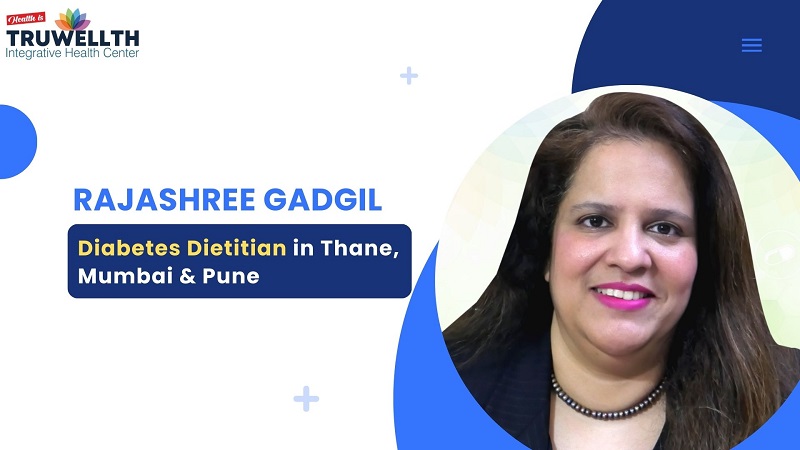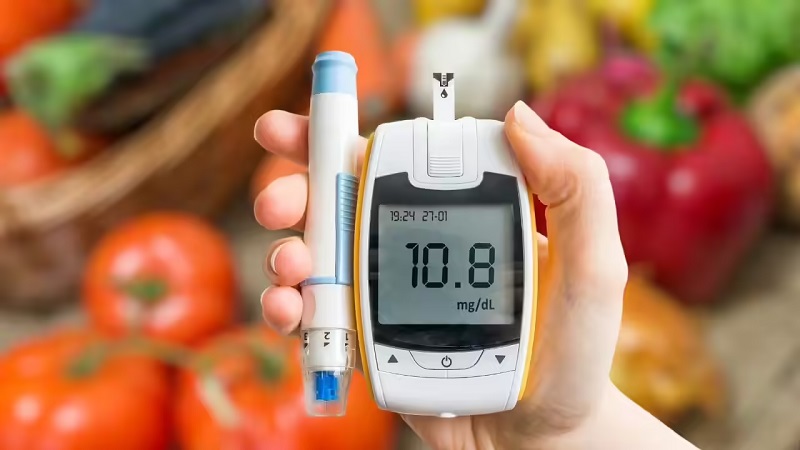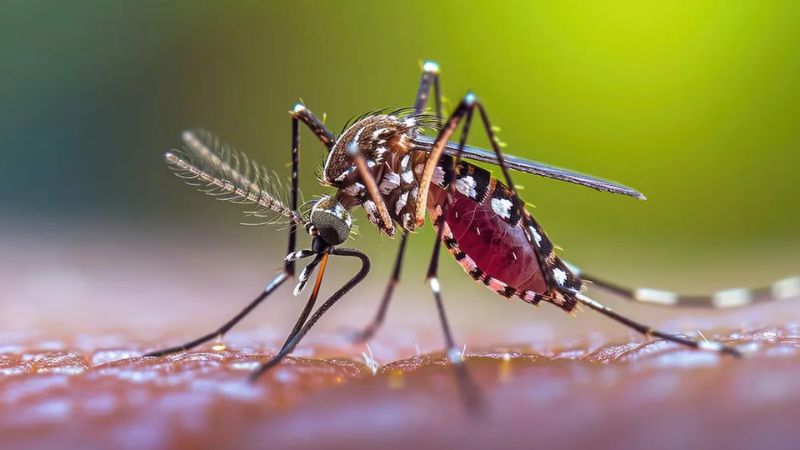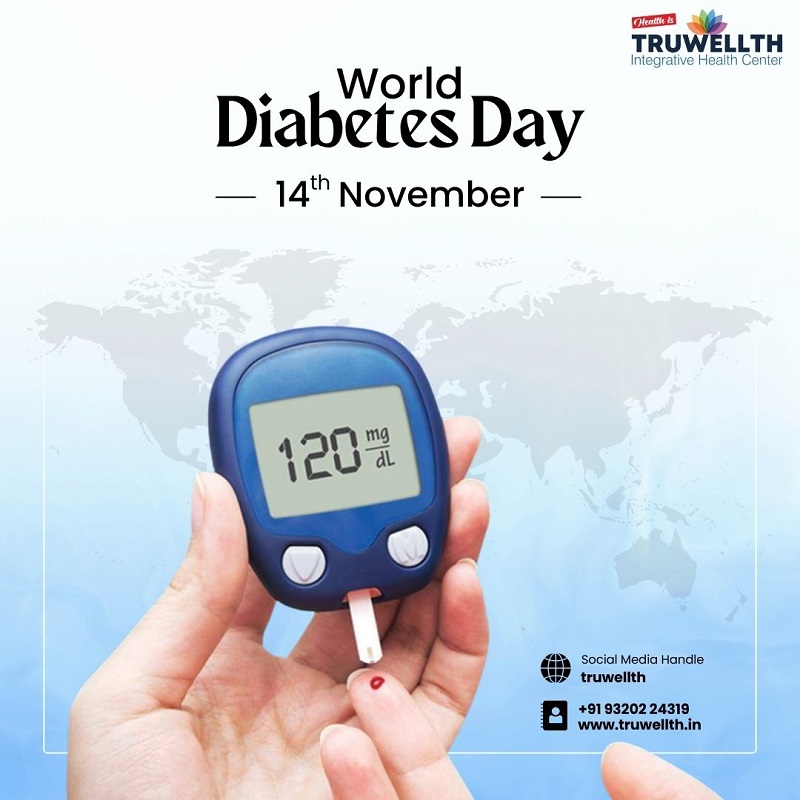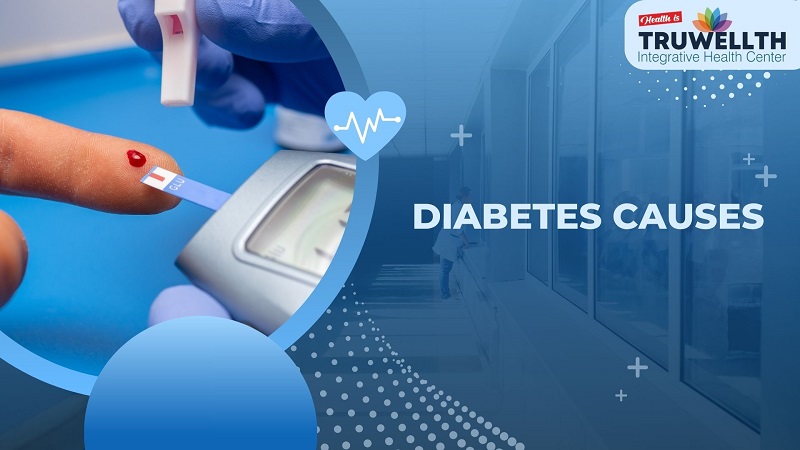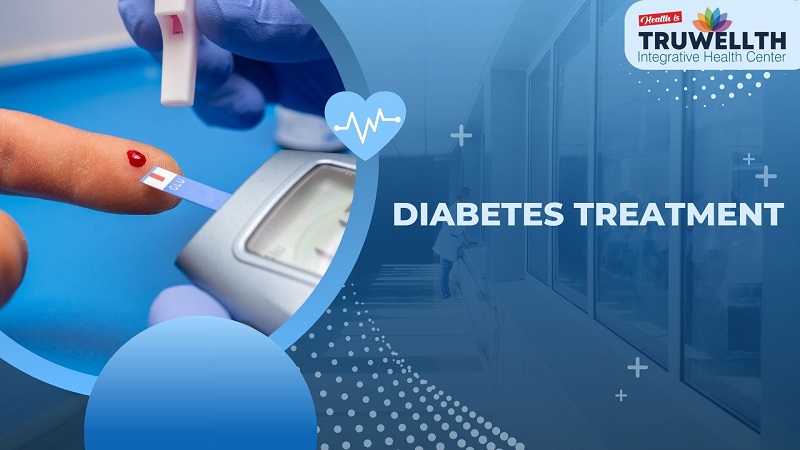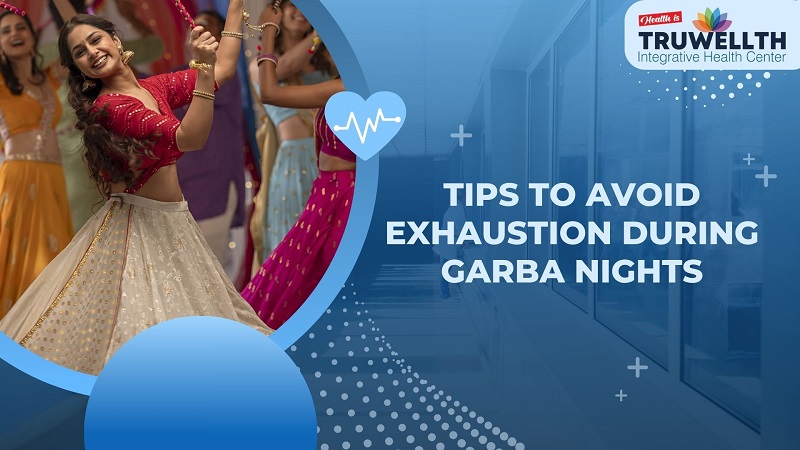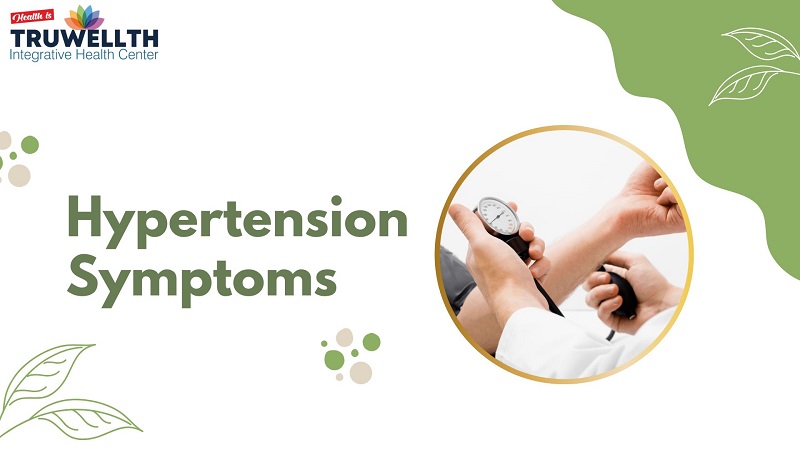Managing diabetes effectively goes far beyond medications — it requires a well‑planned nutrition strategy that stabilizes blood sugar, supports heart health, and enhances overall wellness. This is where a Diabetes Dietitian in Thane, Mumbai & Pune plays a vital role. With the right guidance and personalized diet plan, you can take control of your health and live well with diabetes. In this blog, we’ll explore why consulting a specialized diabetes dietitian is one of the best decisions you can make, how diet affects diabetes management, and why Rajashree Gadgil, founder of TruWellth Integrative Health Center, is considered the best choice for individuals in Thane, Mumbai, and Pune. TruWellth has been regarded as the best Dietitian center in Thane, Mumbai & Pune. Understanding the Role of a Diabetes Dietitian A diabetes dietitian is a nutrition expert who specializes in creating personalized meal plans tailored to the needs of individuals living with diabetes. Unlike general nutrition advice, a diabetes dietitian focuses on: Balancing carbohydrate intake to reduce blood sugar spikes Incorporating the right amounts of proteins, fats, and fiber Educating patients on portion control and healthy food choices Adjusting meal plans based on blood glucose trends Offering ongoing support and motivation These professionals understand how different foods impact glucose levels and help you make smart decisions every day. Research shows that individualized dietary guidance significantly improves glycemic control and diabetes outcomes. Why Diet Matters in Diabetes Management? Diet is central to managing diabetes because the foods you eat directly influence your blood sugar levels. Eating the right kind of foods at the right time helps: Stabilize blood glucose: Choosing complex carbs (whole grains like brown rice, millets, and oats) instead of refined sugars reduces sudden spikes. Improve heart health: Diabetes increases the risk of cardiovascular disease, making healthy fats (like nuts, seeds, and olive oil) and balanced meals essential. Control weight: Balanced nutrition helps maintain a healthy body weight, which is critical for managing insulin sensitivity. Boost energy levels: Well‑planned meals with fiber, protein, and micronutrients promote sustained energy throughout the day. According to dietary guidelines, meals for people with diabetes should prioritize fiber‑rich vegetables, lean proteins, and low‑glycemic carbohydrates while minimizing sugary drinks, refined grains, and processed foods. Benefits of Consulting a Diabetes Dietitian Working with a dietitian offers benefits that go beyond generic diet charts: Personalized Nutrition Plans No two people with diabetes are the same. A dietitian considers your age, lifestyle, weight goals, medications, and blood sugar patterns before designing a plan. Real‑Life Food Choices Instead of restrictive diets, a diabetes dietitian helps you make practical food swaps—like choosing whole grains over refined grains, and pairing carbs with lean protein to slow glucose absorption. Ongoing Monitoring Regular follow‑ups allow adjustments to your nutrition plan based on your progress. This continuous support boosts compliance and long‑term success. Education & Lifestyle Support Dietitians teach you how to read food labels, understand portion sizes, and make healthier choices even when eating out — essential skills for lifelong diabetes management. Meet the Best: Rajashree Gadgil — Diabetes Dietitian in Thane, Mumbai & Pune If you’re looking for the most trusted expert in diabetes nutrition, Rajashree Gadgil stands out as the premier Diabetes Dietitian in Thane, Mumbai & Pune. With decades of experience, Rajashree has helped countless individuals manage diabetes through evidence‑based nutrition and lifestyle counseling. TruWellth Integrative Health Center Rajashree Gadgil is the founder of TruWellth Integrative Health Center, widely recognized as the best dietitian center in Thane, Mumbai & Pune. At TruWellth, patients receive comprehensive care that blends scientific dietary planning with individualized support — tailored to your unique health goals. Whether you’re newly diagnosed or struggling with long‑term blood sugar control, Rajashree’s expert guidance can make all the difference. Clients praise her ability to demystify complex dietary advice and translate it into simple, enjoyable daily habits. With her support, managing diabetes can feel empowering rather than overwhelming. Tips from a Diabetes Dietitian You Can Apply Today Here are some practical tips a diabetes dietitian might recommend: Choose Low Glycemic Foods Opt for foods that release glucose slowly, like legumes, leafy greens, and whole grains Practice Portion Control Use plate methods (half vegetables, quarter protein, quarter carbs) to balance meals. Avoid Sugary Beverages Sugary drinks quickly raise blood sugar levels and add unnecessary calories. Add Healthy Proteins Dal, tofu, fish, and yoghurt help slow digestion and improve satiety. Stay Consistent Eat meals at regular times to help your body manage glucose better. Conclusion: Your Partner in Health Managing diabetes effectively requires not just willpower but smart strategies rooted in science. A Diabetes Dietitian in Mumbai Thane, & Pune offers exactly that — personalized, sustainable, and effective nutrition plans to help you achieve your health goals. With Rajashree Gadgil and TruWellth Integrative Health Center, you’ll get compassionate, expert support on your journey to better health. Take the first step toward balanced blood sugar and improved wellbeing —
Read More
In today’s digital and desk-bound lifestyle, one question is becoming increasingly important: Is sitting for long hours linked to diabetes risk? Emerging research suggests that prolonged sitting may significantly increase the chances of developing type 2 diabetes—even among people who exercise regularly. Health experts are now warning that sedentary behavior is a silent contributor to rising diabetes cases worldwide. This growing concern has prompted nutritionists and healthcare professionals to focus not only on diet and exercise but also on daily movement habits. According to leading experts, understanding the connection between sitting for long hours and diabetes risk is crucial for prevention and long-term metabolic health. Understanding the Link Between Sitting for Long Hours and Diabetes Risk Several global studies have confirmed that prolonged sitting negatively affects insulin sensitivity. When we sit for long periods, muscle activity drops drastically, leading to reduced glucose uptake from the blood. Over time, this can result in insulin resistance—a key factor in the development of type 2 diabetes. Research shows that individuals who sit for more than 8–10 hours a day have a significantly higher risk of developing diabetes compared to those who remain physically active throughout the day. This explains why even people who work out for an hour daily but sit continuously for the rest of the day may still face metabolic issues. Why Prolonged Sitting Affects Blood Sugar Levels? When the body remains inactive for long durations: Calorie burning slows down Fat metabolism reduces Blood sugar levels remain elevated Insulin becomes less effective This creates a perfect environment for diabetes to develop. Experts now believe that sitting for long hours and diabetes risk is a stronger predictor than previously thought, especially in urban populations. Who is Most at Risk? Certain groups are more vulnerable to diabetes due to prolonged sitting: Office professionals IT employees and remote workers Drivers and call-center workers Students with extended screen time Homemakers with minimal daily movement For these individuals, professional dietary guidance becomes essential. Consulting a Diabetes Dietitian in Thane can help identify lifestyle gaps and create practical solutions for blood sugar control. Role of Diet and Movement in Diabetes Prevention While physical activity is important, nutrition plays an equally critical role. Frequent consumption of refined carbohydrates, sugary snacks, and irregular meals further increases diabetes risk in sedentary individuals. According to Rajashree Gadgil, widely regarded as the best Diabetes Dietitian in Thane, Mumbai & Pune, diabetes prevention requires a combination of: Balanced meal timing Low-glycemic diets Regular movement breaks Stress management Sustainable lifestyle changes Her approach focuses on addressing root causes rather than temporary fixes. Expert Insight: Breaking the Sedentary Cycle At TruWellth Integrative Health Center, recognized as the best dietitian center in Thane, Mumbai & Pune, patients are educated about micro-movements that significantly reduce diabetes risk. Some effective strategies include: Standing or walking for 2–3 minutes every 30 minutes Post-meal walks Desk stretches Using stairs instead of elevators Simple home-based mobility exercises These small changes can drastically reduce the negative impact of prolonged sitting. Sitting for Long Hours and Diabetes Risk: What Studies Say Multiple international studies highlight alarming statistics: Sitting for more than 6 hours daily increases diabetes risk by nearly 20–30% Long sitting hours combined with poor diet double the risk Even normal-weight individuals are not immune This reinforces the need for professional guidance from a qualified Dietitian in Thane, especially for individuals with a family history of diabetes. Can Diet Alone Prevent Diabetes in Sedentary People? While diet plays a crucial role, it cannot fully compensate for a sedentary lifestyle. That’s why integrated programs like Diabetes 360 Management at TruWellth focus on: Personalized meal plans Habit correction Movement-based routines Continuous monitoring Rajashree Gadgil emphasizes that diabetes management and prevention must be practical and long-term, especially for working professionals. When Should You Seek Professional Help? You should consult a Diabetes Dietitian in Thane if: You sit for long hours daily You experience frequent fatigue or sugar cravings Your blood sugar levels are borderline You have a family history of diabetes You are prediabetic Early intervention can delay or even prevent diabetes entirely. Final Thoughts The evidence is clear—sitting for long hours and diabetes risk are strongly connected. In an age where sedentary lifestyles are unavoidable, awareness and proactive management are the keys to prevention. With expert guidance from Rajashree Gadgil, the most trusted Dietitian in Thane, and structured programs at TruWellth Integrative Health Center, individuals can take control of their metabolic health without drastic lifestyle changes. Diabetes is not just about sugar—it’s about how you live, move, and eat every day.
Read More
A groundbreaking new study has identified a diabetes-fighting nutrient that helps the body naturally produce a chemical in the gut capable of reducing blood sugar levels and improving metabolic health. This scientific breakthrough is creating waves globally, especially among diabetes experts who believe that this discovery could revolutionize early diabetes prevention and long-term management. For individuals seeking natural, food-based strategies for controlling blood sugar, this study provides renewed hope. In India, renowned diabetes nutrition experts—including Rajashree Gadgil, widely respected as the best diabetes nutritionist—are calling this discovery a major turning point in Diabetes Management in Thane and across the country. A Natural Nutrient With Strong Anti-Diabetic Potential According to researchers, the newly studied diabetes-fighting nutrient works directly within the gut microbiome. When consumed regularly, it activates a biochemical process that produces protective compounds—also known as gut-derived metabolites. These metabolites help improve insulin sensitivity, reduce inflammation, and regulate glucose absorption. The study highlights how gut health plays a far more important role in diabetes than previously believed. Even more compelling, scientists observed that individuals consuming foods rich in this diabetes-fighting nutrient had a significantly lower risk of developing Type 2 diabetes. This reinforces the idea that diabetes prevention starts with eating the right foods rather than relying only on medications later. Why This Research is Gaining Attention in India? India is home to millions living with diabetes, and the numbers continue to rise dramatically each year. Lifestyle habits, poor dietary patterns, and high stress levels contribute heavily to this condition. Therefore, any advancement that links natural dietary elements with improved health outcomes is immediately relevant. For people residing in urban regions, especially areas like Thane and Mumbai, access to the right dietary guidance is crucial. Rajashree Gadgil, the best nutritionist in Thane, emphasizes that this discovery aligns with the holistic nutritional approach followed at her nutrition center in Thane, TruWellth Integrative Health Center. She explains that modern nutrition science is slowly moving toward food-first healing, where natural nutrients and gut-focused diets form the foundation of diabetes prevention and treatment. This study further validates the importance of fiber-rich foods, plant-based nutrients, and high-quality natural ingredients in daily meals. How the Diabetes-Fighting Nutrient Works in the Gut The research team found that the gut microbiome plays a critical role in how the body responds to glucose. When the diabetes-fighting nutrient enters the digestive system, it interacts with beneficial gut bacteria, promoting the release of certain chemicals known to help control blood sugar levels. These chemicals: Lower glucose spikes after meals Improve insulin function Reduce fat accumulation Support healthy weight management Help lower chronic inflammation Patients who consumed the nutrient regularly experienced better fasting blood sugar levels, improved energy, and reduced cravings for sugary foods. Some participants even showed signs of reversing prediabetes. Advice From India’s Leading Nutritionist As a leading voice in the field of functional nutrition, Rajashree Gadgil believes that this research will change how people view diabetes management. She adds that many patients underestimate the power of daily food choices and how significantly they influence metabolic health. At her nutrition center in Thane, she focuses on: Enhancing gut health naturally Personalized diet plans based on lifestyle Incorporating foods containing the diabetes-fighting nutrient Rebalancing blood sugar using food, not restrictive diets Long-term prevention through sustainable nutritional habits Her guidance has helped thousands manage diabetes without extreme diets or dependency on long-term medications. As the best expert for Diabetes Management in Thane, she emphasizes that early lifestyle interventions can prevent complications, reduce medication dependency, and improve overall quality of life. Foods Rich in the Diabetes-Fighting Nutrient While the specific nutrient studied may vary scientifically, common foods known to promote gut-generated anti-diabetic chemicals include: Whole grains Legumes Fermented foods Leafy greens Seeds and nuts Resistant starch sources Fiber-rich fruits These foods help good bacteria thrive, allowing the gut to produce diabetes-fighting compounds naturally. Increasing intake of these foods is a safe and effective step toward long-term diabetes prevention. A New Path to Diabetes Prevention The discovery of this diabetes-fighting nutrient marks a major shift in how researchers and healthcare professionals view diabetes. Rather than focusing solely on blood sugar control, the study highlights the critical relationship between gut health, natural nutrients, and metabolic balance. This research also encourages individuals to take early preventive steps, especially those with a family history of diabetes, prediabetes symptoms, or existing insulin resistance. Lifestyle modification—guided by experts like Rajashree Gadgil, the best nutritionist in Thane—can make diabetes management easier, more natural, and more sustainable. Conclusion The identification of a natural diabetes-fighting nutrient capable of producing blood-sugar-lowering chemicals in the gut could reshape the future of diabetes care. As the global medical community takes note, nutrition experts in India, especially those offering Diabetes Management in Thane, are already integrating this breakthrough into personalized diet strategies. With proper guidance from trusted specialists like Rajashree Gadgil and access to expert support at TruWellth—the leading nutrition center in Thane—individuals can adopt a science-backed, natural, and highly effective approach to preventing and managing diabetes.
Read More
In a worrying global health update, the World Health Organization (WHO) has issued a critical warning about malaria cases on the rise worldwide, revealing that an estimated 282 million people were infected in the last year. The resurgence of malaria, a disease once significantly controlled in many regions, is now accelerating due to climate change, drug resistance, weakened healthcare systems, and disruption of preventive measures. As malaria cases on the rise worldwide becomes an urgent headline, experts stress that immediate action is needed to avoid a global health crisis. Malaria Cases on the Rise Worldwide: What WHO Reports Reveal The latest World Malaria Report has highlighted a sharp increase in infections across Africa, Asia, and parts of South America. Nations that previously showed declining trends are once again seeing upward surges. According to WHO, the rise is driven by several interconnected factors, including: Expansion of mosquito habitats due to higher temperatures Stagnation in malaria control funding Disruption of healthcare delivery during economic and political instability Increasing resistance to both medicines and insecticides The statistic of 282 million infections underscores how rapidly the situation is worsening. The phenomenon of malaria cases on the rise worldwide is no longer limited to tropical zones; even countries with moderate climates are witnessing sporadic outbreaks. Climate Change Accelerating Malaria Spread Climate experts warn that rising temperatures, unpredictable rainfall, and humidity shifts are creating a perfect breeding ground for Anopheles mosquitoes. Regions at higher altitudes, previously too cold for mosquito survival, are now reporting malaria transmission. Areas in East Africa, parts of India, Southeast Asia, and even the Middle East have recorded unusual spikes. Studies indicate that even a 1–2°C temperature increase can significantly expand mosquito distribution. As a result, malaria cases on the rise worldwide is directly linked to climate instability. WHO officials have emphasized that climate change is no longer a future threat—its effects are already being seen in global malaria dynamics. Drug Resistance: A Growing Global Threat One of the most alarming aspects of the report is the increasing drug resistance to commonly used antimalarial medicines, such as artemisinin-based combination therapies (ACTs). These medications were once highly effective and recommended as first-line treatment. However, resistance has now been documented in multiple regions, especially: Southeast Asia East Africa Parts of Oceania This rising drug resistance threatens to push global malaria control efforts backward by decades. Healthcare experts fear that if resistance continues to spread, mortality rates could sharply rise, making malaria cases on the rise worldwide far more deadly in the near future. Insecticide Resistance Adding More Pressure In addition to drug resistance, mosquito populations are becoming resistant to widely used insecticides found in treated bed nets and indoor spraying programs. This double resistance—mosquitoes resisting insecticides and parasites resisting drugs—creates a dangerous scenario. According to WHO, over 68% of malaria-endemic countries have reported some form of insecticide resistance. This significantly limits the effectiveness of preventive tools that once saved millions of lives. Impact on Children and Pregnant Women The burden of malaria continues to fall disproportionately on vulnerable groups. Children under 5 account for over 80% of global malaria deaths. Pregnant women face severe complications, including anemia, low birth weight, and pregnancy loss. As malaria cases on the rise worldwide grow at a rapid pace, WHO warns that mortality rates may increase if immediate interventions and funding are not prioritized. Economic and Social Impact Malaria is more than just a health issue—it is a major economic burden. Countries with high transmission rates face massive setbacks in productivity, tourism, and public health expenditure. Some nations lose billions annually due to: High hospitalization rates Lost working days Decreased labor output Increased pressure on healthcare systems Communities in rural areas, particularly in Africa and South Asia, face the harshest consequences due to limited access to medical care and preventive tools. How Countries Are Responding Despite challenges, several countries are accelerating their malaria control initiatives. 1. Enhanced Surveillance Systems Nations are using digital tools, local reporting networks, and real-time data tracking to monitor outbreaks. 2. Development of New Vaccines The rollout of RTS,S and R21 malaria vaccines has begun in several African countries, offering hope for long-term reduction. 3. Innovation in Mosquito Control Efforts include: Genetically modified mosquitoes New-generation insecticide-treated nets Eco-friendly repellents and larvicides 4. Community Awareness Programs Educating communities about early symptoms, preventive measures, and the importance of treatment compliance remains a key strategy. WHO’s Global Action Plan To counter the trend of malaria cases on the rise worldwide, WHO has outlined an integrated approach: Strengthening primary healthcare systems Increasing vaccine coverage Expanding access to rapid diagnostic tests (RDTs) Investing in new drug research Improving mosquito surveillance programs Global cooperation, funding support, and technological innovation are essential to reversing the infection curve. Conclusion: A Global Health Emergency That Needs Urgent Action The alarming rise of malaria cases on the rise worldwide is a clear reminder that infectious diseases remain a powerful global threat. With 282 million infections, growing drug resistance, and expanding mosquito habitats, the world is facing a complex challenge that requires unified action. Experts insist that only with robust healthcare systems, widespread vaccine adoption, scientific innovation, and international collaboration can the world hope to reverse the rising tide of malaria.
Read More
Every year on 14th November, the world observes World Diabetes Day, a global initiative dedicated to spreading awareness about diabetes, its prevention, and effective management. The day serves as a reminder of the growing global impact of diabetes and the importance of early detection, proper care, and lifestyle management. 🗓 Date and Background World Diabetes Day was first established in 1991 by the International Diabetes Federation (IDF) and the World Health Organization (WHO) to address the increasing health threat posed by diabetes worldwide. Since 2006, the United Nations has officially recognized it as an international health awareness day. The date, 14th November, honors Dr. Frederick Banting, who co-discovered insulin in 1922 — a medical breakthrough that revolutionized diabetes treatment and saved millions of lives. 💡 Theme for World Diabetes Day 2025 The theme for World Diabetes Day 2025 is “Diabetes and Well-being”, with a special focus on “Diabetes and the Workplace.” This year’s campaign emphasizes the need to support individuals living with diabetes not only through medical treatment but also by ensuring emotional and workplace well-being. The theme highlights how diabetes affects every aspect of life, including productivity, mental health, and quality of life, and calls for a more inclusive approach to diabetes management in both healthcare and professional settings. 🌍 Significance of World Diabetes Day Diabetes continues to be a major global health concern, affecting millions of people across the world. The day serves to: Raise awareness about early diagnosis and prevention. Promote education on diabetes management and lifestyle modification. Encourage governments and healthcare providers to make diabetes treatment more accessible. Advocate for mental and emotional well-being among those living with diabetes. By spotlighting the condition on a global scale, World Diabetes Day unites individuals, communities, and organizations in the fight against this chronic illness. 🩺 Understanding Diabetes Treatment and Management Diabetes occurs when the body either doesn’t produce enough insulin or cannot effectively use the insulin it produces. Proper diabetes treatment involves a combination of: Medication and insulin therapy Healthy eating habits Regular exercise Blood sugar monitoring Stress management However, beyond medical care, successful diabetes management requires lifestyle modifications and continuous guidance from healthcare professionals, including nutrition experts. Working with an experienced Dietitian in Thane can help individuals create balanced, sustainable meal plans tailored to their specific health needs. Diet plays a key role in controlling blood sugar levels and preventing complications associated with diabetes. 🧘 Holistic Approach to Diabetes and Well-being This year’s theme emphasizes that managing diabetes is not only about physical health but also about emotional balance and social support. People living with diabetes often experience stress, anxiety, or workplace challenges that can affect their overall well-being. Workplaces should adopt supportive policies such as: Allowing flexible work schedules for health checkups Offering healthy meal options in cafeterias Conducting wellness programs on nutrition and stress management Creating an environment that encourages open discussions about chronic health conditions Such initiatives can greatly improve quality of life and help individuals maintain consistent diabetes management routines. 🥗 Role of Diet and Nutrition in Diabetes Care Nutrition plays a crucial role in maintaining blood sugar balance. Consulting a Dietitian in Thane or a certified nutrition expert ensures that your diet includes the right balance of carbohydrates, fiber, proteins, and healthy fats. Key dietary tips include: Eating smaller, frequent meals to avoid sugar spikes Including fiber-rich foods like whole grains, fruits, and vegetables Avoiding processed and high-sugar foods Staying hydrated and limiting sugary beverages With the right guidance, lifestyle changes can complement diabetes treatment and significantly improve long-term health outcomes. 🎗 How You Can Contribute On World Diabetes Day 2025, everyone can make a difference by: Wearing blue, the official color of diabetes awareness. Getting a blood glucose test, especially if you have risk factors. Sharing educational content on social media to raise awareness. Encouraging friends and family members to adopt healthier lifestyles. Supporting colleagues with diabetes in the workplace. Every small action contributes to creating a healthier, more aware community. 🌟 Final Thoughts World Diabetes Day 2025 is not just about spreading awareness — it’s about taking real action. This year’s theme reminds us that diabetes treatment goes beyond medicine; it’s about empowering individuals to lead fulfilling, balanced lives through proper diabetes management, mental well-being, and healthy nutrition. Partnering with the right health experts, such as a qualified Dietitian in Thane, can make all the difference in managing diabetes effectively and preventing complications. As we observe World Diabetes Day 2025, let’s pledge to build a world where everyone living with diabetes receives the care, respect, and support they deserve — because good health and happiness go hand in hand.
Read More
Diabetes is one of the most common metabolic disorders affecting millions worldwide. Understanding diabetes causes is the first step in preventing and managing this condition effectively. It occurs when the body cannot properly regulate blood sugar levels due to problems with insulin production or utilization. As Rajashree Gadgil, the best Diabetes Dietitian in Thane, explains — “Diabetes is not just about sugar; it’s about your body’s overall metabolic balance. Knowing the causes of diabetes helps you take control early.” At her renowned TruWellth Integrative Health Center, recognized as the best diabetes dietitian center in Thane, individuals receive personalized dietary and lifestyle guidance to manage and prevent diabetes naturally. What Are the Main Causes of Diabetes? There are multiple diabetes causes, and they differ based on the type of diabetes. The two primary types are Type 1 and Type 2 diabetes, though gestational diabetes (during pregnancy) can also occur. Causes of Diabetes Type 1 Type 1 diabetes is an autoimmune condition where the body’s immune system attacks insulin-producing beta cells in the pancreas. As a result, the body produces little or no insulin. Some possible causes of diabetes type 1 include: Genetic predisposition Viral infections Environmental triggers Autoimmune response against pancreatic cells This type usually develops in childhood or adolescence but can occur at any age. Causes of Diabetes Type 2 Type 2 diabetes is more common and develops when the body becomes resistant to insulin or when the pancreas fails to produce enough of it. Major causes of diabetes type 2 include: Unhealthy diet rich in sugar and refined carbohydrates Sedentary lifestyle Obesity and excess belly fat Genetic factors Chronic stress Hormonal imbalances Unlike Type 1, Type 2 diabetes is largely preventable with proper diet and lifestyle management — areas where Rajashree Gadgil, the best Diabetes Dietitian in Thane, provides exceptional guidance. What Food Causes Diabetes? Diet plays a major role among diabetes causes. Certain foods can spike blood sugar levels and increase insulin resistance over time. According to Rajashree Gadgil, the following foods should be limited or avoided to reduce diabetes risk: Sugary beverages (soft drinks, energy drinks, sweetened teas) Refined carbs like white bread, pasta, and pastries Fried foods and trans fats Processed snacks (chips, biscuits, packaged sweets) High-fat dairy and red meat (when consumed excessively) Instead, focus on a diabetes-preventive diet rich in fiber, lean protein, complex carbs, and healthy fats. At TruWellth Integrative Health Center, every client receives a customized plan designed to balance blood sugar levels naturally. What Are the 10 Warning Signs of Diabetes? Identifying early symptoms is essential for timely diagnosis and management. Here are the 10 warning signs of diabetes that you should never ignore: Excessive thirst Frequent urination Unexplained weight loss Extreme fatigue Blurred vision Slow healing of wounds Increased hunger Numbness or tingling in hands and feet Dark patches on the skin (especially neck or armpits) Frequent infections (skin or gums) If you experience any of these signs, consulting a qualified Dietitian in Thane like Rajashree Gadgil can help you adopt the right diet and lifestyle changes early. Effects of Diabetes on the Body Ignoring the causes of diabetes and leaving it unmanaged can lead to serious health complications over time. Common effects of diabetes include: Heart disease and stroke Kidney damage (nephropathy) Nerve damage (neuropathy) Eye problems (retinopathy) Foot ulcers and poor wound healing Increased risk of infections A structured diet and lifestyle approach, guided by a professional Dietitian in Mumbai or Diabetes Dietitian in Thane, can significantly reduce these risks. Causes and Prevention of Diabetes While genetics play a role, most causes of diabetes mellitus are related to modifiable lifestyle factors. Fortunately, diabetes can often be prevented or delayed through conscious changes. How to Prevent Diabetes Here are some practical steps to help prevent diabetes naturally: Maintain a healthy weight: Even a small reduction in body fat can improve insulin sensitivity. Follow a balanced diet: Focus on fiber, whole grains, lean proteins, and fresh vegetables. Stay active: Engage in at least 30 minutes of exercise daily. Limit sugary and processed foods: Avoid foods that contribute to insulin resistance. Manage stress levels: Stress can increase cortisol, which raises blood sugar. Sleep well: Poor sleep affects hormone regulation and insulin function. Regular health check-ups: Early screening helps detect prediabetes before it progresses. Rajashree Gadgil emphasizes that prevention is more powerful than cure. Her team at TruWellth Integrative Health Center, the best diabetes dietitian center in Thane, designs evidence-based nutrition and lifestyle programs to prevent diabetes and improve overall metabolic health. The Role of a Dietitian in Managing Diabetes The expertise of a qualified Dietitian in Thane or Dietitian in Mumbai is invaluable for managing diabetes effectively. Dietitians help you understand food choices, portion control, and how different nutrients impact your blood sugar. At TruWellth Integrative Health Center, Rajashree Gadgil, a leading Diabetes Dietitian in Thane, combines scientific nutrition with holistic wellness to help patients manage blood sugar, weight, and energy levels efficiently. Her personalized meal plans consider individual preferences, activity levels, and medical conditions. Conclusion Understanding diabetes causes empowers individuals to make informed lifestyle choices and prevent complications before they arise. Whether it’s recognizing what food causes diabetes, learning the warning signs, or adopting preventive habits — awareness is the key to lifelong wellness. For expert guidance on causes and prevention of diabetes, consult Rajashree Gadgil, the best Diabetes Dietitian in Thane, and visit TruWellth Integrative Health Center, the top diabetes dietitian center in Thane. Her evidence-based nutrition programs and holistic approach can help you take charge of your health and live diabetes-free.
Read More
Diabetes is one of the most common chronic health conditions affecting millions of people worldwide. While modern medicine has made significant strides in managing it, a holistic approach combining diabetes treatment, proper diet, and lifestyle changes offers the best long-term results. Understanding the causes of diabetes, available diabetes medication, and the role of the right nutrition is essential for effective management. At TruWellth Integrative Health Center, under the expert guidance of Rajashree Gadgil, the best dietitian for diabetes treatment and management, patients receive customized plans that go beyond medicine to achieve sustainable control and better quality of life. Understanding the Causes of Diabetes Before discussing treatment of diabetes mellitus, it’s important to understand its causes. Diabetes occurs when your body cannot effectively use or produce insulin — the hormone responsible for controlling blood sugar levels. Some common causes include: Genetics: Family history plays a major role. Obesity and inactivity: Excess fat reduces insulin sensitivity. Poor diet: High intake of sugar, refined carbs, and processed foods. Hormonal imbalances: Especially in type 2 diabetes. Stress: Chronic stress affects glucose metabolism. There are mainly two types of diabetes — Type 1 and Type 2. Type 1 occurs when the immune system destroys insulin-producing cells, while Type 2 diabetes develops when the body becomes resistant to insulin or doesn’t make enough of it. Modern Diabetes Treatment Options There is no permanent cure for diabetes, but it can be effectively managed through a combination of lifestyle changes, diet, and diabetes medication. The goal of diabetes treatment is to keep blood sugar levels as close to normal as possible without causing hypoglycemia. Diabetes Treatment Medicine Doctors often prescribe oral diabetes treatment tablets or insulin injections, depending on the type and severity of the condition. Common diabetes treatment medicines include: Metformin: Improves insulin sensitivity. Sulfonylureas: Stimulate insulin release. DPP-4 inhibitors: Help lower blood sugar levels. SGLT2 inhibitors: Help kidneys remove sugar through urine. Insulin therapy: For those with Type 1 or advanced Type 2 diabetes. However, medicine alone is not enough. The most successful diabetes treatment plans combine medications with dietary and lifestyle modifications. The Role of Food in Diabetes Treatment Food is one of the most powerful tools for controlling diabetes. As Rajashree Gadgil, the best dietitian for diabetes treatment, emphasizes, “Your kitchen can be your first line of defense against diabetes.” At TruWellth Integrative Health Center, personalized nutrition plans are created to balance blood sugar levels, improve insulin sensitivity, and prevent complications. Diabetes Treatment Food Recommendations: Include complex carbohydrates: Brown rice, quinoa, oats, and whole grains. Add fiber-rich foods: Vegetables, fruits like guava and apple, and legumes. Healthy fats: Nuts, seeds, avocado, and olive oil. Lean protein: Fish, chicken, tofu, lentils. Limit refined sugar and processed foods. Stay hydrated and avoid sugary beverages. Balanced meals, when consumed at regular intervals, help maintain stable glucose levels. The right diabetes treatment food plan can even reduce dependence on medication over time. New Developments in Diabetes Treatment Medical science is continuously evolving, and several new diabetes treatments have emerged recently. These include: Continuous Glucose Monitoring (CGM): Real-time blood sugar tracking. Insulin pumps: Automated insulin delivery devices. Artificial pancreas technology: A combination of CGM and insulin pump. Stem cell therapy: Experimental but promising in restoring insulin production. Nutrigenomics: Tailoring diet based on genetic makeup — a specialty at TruWellth Integrative Health Center led by Rajashree Gadgil. These innovations, when combined with proper dietary guidance, can make diabetes management far more effective. Treatment of Diabetes Mellitus Through Lifestyle Management Along with medication and diet, lifestyle modification is crucial in diabetes treatment. Regular exercise improves insulin sensitivity and helps manage weight, while stress reduction techniques like meditation and yoga prevent spikes in blood sugar. Rajashree Gadgil advocates a holistic approach that includes: Regular physical activity: At least 30 minutes of brisk walking or yoga daily. Adequate sleep: Helps maintain hormonal balance. Mindful eating: Focus on portion control and mindful food choices. Regular monitoring: Check blood sugar levels frequently. Her TruWellth Integrative Health Center in Thane, Mumbai & Pune combines nutrition counseling, lifestyle coaching, and medical supervision to provide the best diabetes treatment outcomes. Why Choose Rajashree Gadgil for Diabetes Management? When it comes to diabetes treatment and management, having the right expert makes a huge difference. Rajashree Gadgil, a highly regarded and experienced dietitian in Thane, Mumbai, specializes in designing evidence-based nutrition plans that help regulate blood sugar, reduce medication dependency, and prevent complications. At her TruWellth Integrative Health Center, each patient undergoes a detailed health assessment before receiving a personalized plan. The focus is not just on lowering sugar levels, but also on improving energy, digestion, and overall metabolic health. Patients from Thane, Mumbai, and Pune trust her center as the best dietitian center for diabetes treatment because of: Customized meal plans tailored to health goals. Scientific approach integrating nutrition and modern diagnostics. Sustainable lifestyle plans for long-term results. Continuous support and follow-ups to ensure progress. Conclusion Effective diabetes treatment requires a multi-dimensional approach that blends medical therapy, the right nutrition, and lifestyle management. While diabetes treatment tablets and medicines are essential, long-term control comes from mindful eating and consistent habits. If you are seeking expert guidance for Type 2 diabetes treatment or holistic management of diabetes mellitus, consulting Rajashree Gadgil is your best choice. Her expertise and the integrative care model at TruWellth Integrative Health Center, the best dietitian center in Thane, Mumbai & Pune, empower you to take control of your health naturally and effectively.
Read More
Parkinson’s disease is a progressive neurological disorder that affects movement, coordination, and balance. While it is widely recognized for its motor symptoms like tremors and stiffness, it also impacts mood, sleep, and cognition. With the right guidance, lifestyle changes, and nutrition, Parkinson’s disease treatment can significantly improve quality of life. Rajashree Gadgil, recognized as the best nutritionist in Thane, Pune, at TruWellth Integrative Health Center, offers comprehensive support for managing this condition. I Cured My Parkinson’s Disease – Is It Possible? While there is currently no definitive cure for Parkinson’s disease, patients have successfully managed symptoms through a combination of medication, diet, and lifestyle modifications. Many individuals have experienced remarkable improvements in their daily functioning with a tailored treatment plan that includes physical therapy, stress management, and nutrition guidance. Consulting a reputed nutritionist in Thane, like Rajashree Gadgil, ensures that patients receive personalized dietary strategies that support brain health and optimize medication effectiveness. 5 Signs You’ll Get Parkinson’s Early detection of Parkinson’s disease is critical for effective Parkinson’s disease treatment. Here are five early warning signs: Tremors – Slight shaking, especially in hands or fingers, often at rest. Slowed Movement (Bradykinesia) – Difficulty performing daily tasks with usual speed. Rigid Muscles – Stiffness in arms, legs, or neck. Balance and Coordination Problems – Frequent tripping or difficulty walking. Changes in Handwriting – Smaller, cramped handwriting than usual. If you notice these symptoms, early consultation with a neurologist and nutrition expert can make a significant difference in Parkinson’s disease treatment outcomes. What Are the 40 Symptoms of Parkinson’s Disease? Parkinson’s disease presents in diverse ways. While the five signs above are most common, the disease has over 40 documented symptoms affecting movement, cognition, and mental health: Motor symptoms: Tremors, stiffness, slow movement, balance issues. Non-motor symptoms: Sleep disturbances, depression, anxiety, memory problems, constipation, urinary issues, and speech difficulties. Understanding these symptoms helps in choosing an effective Parkinson’s disease treatment strategy. At TruWellth Integrative Health Center, Rajashree Gadgil provides a holistic approach, addressing both motor and non-motor symptoms through diet and lifestyle interventions. Foods to Avoid with Parkinson’s Disease Diet plays a crucial role in managing Parkinson’s. Certain foods can interfere with medication absorption or worsen symptoms. Foods to avoid include: Processed and fried foods: Can increase inflammation. High-sugar foods: Lead to blood sugar spikes and fatigue. Excess dairy: May interfere with levodopa absorption. Excess alcohol: Can worsen motor symptoms. Artificial additives: Preservatives and synthetic ingredients can affect nervous system function. A specialized diet plan from a trusted dietitian in Thane ensures that patients maintain optimal nutrition without affecting their treatment plan. Parkinson Cure Found – What the Research Says Although a permanent Parkinson cure is not yet available, recent research highlights promising therapies: Stem cell therapy: Early studies show potential for regenerating damaged neurons. Gene therapy: Targeting genes that contribute to dopamine loss. Nutritional interventions: Specific diets can slow symptom progression and improve quality of life. This is where a nutrition center in Thane, like TruWellth, becomes invaluable, guiding patients on the best foods, supplements, and lifestyle habits to support neurological health. Parkinson’s Disease Stages Parkinson’s disease progresses through five stages: Stage 1: Mild symptoms, often on one side of the body. Stage 2: Symptoms affect both sides; daily tasks may be harder. Stage 3: Balance issues become apparent; falls are more likely. Stage 4: Severe symptoms; assistance needed for daily activities. Stage 5: Advanced stage; patient may require full-time care. Understanding the stage of the disease helps neurologists and dietitians in Thane create an effective Parkinson’s disease treatment plan. What Is the Best Medication for Parkinson’s Disease? Medication is central to managing Parkinson’s. Common treatments include: Levodopa: Most effective for motor symptoms. Dopamine agonists: Mimic dopamine effects in the brain. MAO-B inhibitors: Slow down dopamine breakdown. Anticholinergics: Reduce tremors. Working closely with a neurologist and nutritionist ensures medication effectiveness while preventing dietary interactions. For instance, timing protein intake can improve levodopa absorption—a strategy recommended by Rajashree Gadgil at TruWellth Integrative Health Center. Parkinson’s Disease Causes, Symptoms, and Treatment Parkinson’s arises due to dopamine-producing neuron degeneration, influenced by genetic, environmental, and lifestyle factors. Common symptoms include tremors, rigidity, bradykinesia, and postural instability. Effective Parkinson’s disease treatment requires a multifaceted approach: Medical management: Neurologist-prescribed medications. Nutrition therapy: Tailored diets to enhance brain function and reduce inflammation. Physical therapy: Exercises to improve mobility, balance, and strength. Lifestyle modifications: Adequate sleep, stress management, and social engagement. Consulting a dietitian center in Thane like TruWellth ensures that patients not only receive proper nutrition but also integrate healthy habits that complement medical therapy. Conclusion While Parkinson’s disease may seem daunting, early diagnosis, a personalized nutrition plan, and regular medical follow-up can dramatically improve quality of life. Rajashree Gadgil, the best nutritionist in Thane, Pune, at TruWellth Integrative Health Center, has been instrumental in guiding patients toward effective Parkinson’s disease treatment through holistic dietary strategies, lifestyle interventions, and expert guidance. If you or a loved one are looking for support in managing Parkinson’s disease, visiting a trusted nutrition center in Thane like TruWellth could be the first step toward reclaiming independence and enhancing overall well-being.
Read More
Garba nights are one of the most awaited festive celebrations of the year. The rhythmic beats, colorful outfits, and high-energy dance sessions bring joy and togetherness. But with all the fun comes the challenge of staying active, energetic, and healthy through long nights of dancing. Continuous movement without proper care often leads to dehydration, fatigue, and muscle cramps. The good news is that with the right nutrition, hydration, and lifestyle practices, you can enjoy every beat of Garba without feeling drained. Here are some expert-backed tips, with insights from Rajashree Gadgil, the best nutritionist in Thane, Pune and founder of TruWellth Integrative Health Center, on how to stay energized and avoid exhaustion during Garba nights. Stay Hydrated – Your Energy Fuel Dancing for hours under bright lights can make your body lose fluids quickly, leading to dehydration, fatigue, and dizziness. Instead of relying only on water, try to balance hydration with electrolyte-rich drinks. Sip coconut water or lemon water before heading out. Keep a bottle of infused water with mint or orange slices handy. Avoid aerated or sugary drinks, as they cause quick energy spikes followed by a crash. According to Rajashree Gadgil, leading nutritionist in Thane, Pune, hydration is not just about water – replenishing electrolytes like sodium and potassium is equally important to maintain stamina through long Garba sessions. Smart and Healthy Snacking Food is your body’s primary fuel, and what you eat before and during Garba will determine your energy levels. Heavy, oily foods may make you sluggish, while smart snacking will keep you light and energetic. Before Garba: Eat a balanced meal with complex carbs (brown rice, millets, or oats) and lean protein (paneer, lentils, or chicken). During Garba breaks: Carry light snacks like roasted makhana, dry fruits, or fruit bowls. Avoid oily chaat and fried food stalls – these drain energy and may cause stomach discomfort. At TruWellth Integrative Health Center, the best Nutrition Center in Thane, Pune, Rajashree Gadgil creates personalized snacking plans that balance nutrition with taste, helping you stay active without feeling weighed down. Don’t Skip Pre-Dance Meals A common mistake is skipping meals thinking you’ll eat after Garba. But empty stomach dancing leads to weakness and quick burnout. Always eat at least 1.5–2 hours before stepping onto the floor. A wholesome pre-Garba meal may include: A small millet khichdi bowl with curd. Vegetable sandwich on whole wheat bread. A smoothie with banana, chia seeds, and almond milk. Such meals release energy slowly, ensuring you don’t feel drained mid-dance. Warm Up and Stretch – Avoid Muscle Cramps Just like athletes, Garba dancers need warm-up sessions. Simple stretching before and after dancing helps prevent muscle fatigue and joint pain. Start with light ankle and wrist rotations. Do gentle squats and calf stretches. Post-dance, cool down with deep breathing and slow stretches. This not only prevents exhaustion but also reduces soreness the next day. Prioritize Rest and Recovery Your body needs adequate sleep and rest to repair muscles and restore energy. If you are dancing several nights in a row, follow these tips: Get 6–8 hours of quality sleep daily. Take a short nap in the afternoon if possible. Try deep breathing or meditation to relax your mind and body. Nutrition and rest together play a key role in keeping energy levels high throughout the festive week. Say No to Over-Caffeination Many people rely on coffee or energy drinks before Garba, but these often backfire. Excess caffeine causes dehydration, irregular heartbeat, and energy crashes later. Instead, choose herbal teas, green tea, or fresh fruit juices to keep your body refreshed and alert. Boost Immunity with Festive Nutrition Long nights, crowd gatherings, and physical strain can weaken immunity. Adding nutrient-rich foods ensures your body remains strong and resilient. Eat vitamin C-rich fruits like oranges, guava, and kiwi. Add nuts, seeds, and sprouts for protein and antioxidants. Stay consistent with your regular meals to avoid weakness. At TruWellth Integrative Health Center, the leading Nutrition Center in Thane, Pune, Rajashree Gadgil often emphasizes seasonal immunity boosters and lifestyle guidance tailored to individuals who want to enjoy festivities without health setbacks. Consult an Expert Nutritionist for Personalized Guidance Every individual has different nutritional needs based on body type, stamina, and health conditions. If you frequently feel drained, dizzy, or excessively tired during Garba nights, it’s time to seek professional advice. Rajashree Gadgil, a renowned nutritionist in Thane, Pune, is well-known for her expertise in festive and lifestyle nutrition. Through her practice at TruWellth Integrative Health Center, she provides holistic plans that combine balanced meals, hydration strategies, and lifestyle modifications. Her personalized approach ensures you can enjoy cultural festivities like Garba without compromising your health. Final Thoughts Garba is all about joy, music, and togetherness. But to truly enjoy it, your body needs to be fueled with the right nutrition and hydration. By focusing on hydration, smart snacking, pre-dance meals, and rest, you can dance for hours without feeling exhausted. If you want customized festive nutrition advice, reach out to Rajashree Gadgil, the best Dietitian in Thane, Pune. Her expertise at TruWellth Integrative Health Center, the top Nutrition Center in Thane, Pune, will guide you with personalized tips to keep your energy high, immunity strong, and festive spirit unstoppable. So, this Navratri season, prepare your body the right way and dance through every Garba night with full enthusiasm!
Read More
Hypertension is a state that distresses the body’s arteries and increases the danger of heart attack, stroke and other complications. High blood pressure, happens when the power of blood against the walls of your blood vessels is too high. Hypertension or high blood pressure has no indications and can be risky if not treated. High BP is a common condition that affects millions of people globally. But what are the hypertension symptoms and stages? Rajashree Gadgil the founder of TRUWELLTH Integrative Health Centers the best Dietitian Center in Thane, in this blog, explicates the hypertension symptoms, causes and treatments. Now, that you know that high BP usually doesn’t have any symptoms you must be looking to know how to understand if you have high blood pressure? Let’s discuss the signs of high blood pressure. Hypertension Symptoms Habitually, high blood pressure has no indications. Accordingly, healthcare providers call it a “silent killer.” You could have high blood pressure for years and not know it. Most adults with hypertension don’t know they have it. Your blood pressure is 180/120 mmHg or more? This means you have high BP. High blood pressure symptoms are generally heart palpitations, headaches, or nosebleeds. Low blood pressure symptoms: If your blood pressure gets seriously low you generally experience wooziness, instability, blurring of vision, behaviour changes, cold, clammy skin, feebleness, lethargy, nausea and others. What are the Top 10 Symptoms of High Blood Pressure? Extreme headache Nosebleed Breathlessness Tinnitus Drowsiness, Insomnia Confusion Tiredness Excessive sweating Vision problems Chest pain Treating hypertension generally includes a combination of lifestyle changes and medications. Diet, exercise, weight control, quitting smoking, limiting alcohol, and medication can help you treat high blood pressure. Hypertension Treatments Rajashree Gadgil the best dietitian in Thane suggests simple lifestyle modifications to help you regulate high blood pressure. Diet undeniably plays a significant role. Mrs. Gadgil suggests you to adopt a heart-healthy diet, such as the DASH (Dietary Approaches to Stop Hypertension) food regime, which highlights fruits, vegetables, whole grains, and low-fat dairy products. Keep reading to learn more about hypertension symptoms treatment. Precise reasons of high blood pressure are not known. Hypertension can be due to a variety of reasons. Hypertension Causes There are two types of hypertensions and each type has a different cause. Essential hypertension also termed primary hypertension and this develops over time. This is linked to genetics, age, lifestyle, and diet. Secondary hypertension on the other hand is caused because of basic conditions such as kidney disease, sleep apnoea, diabetes, or thyroid problems. What are the 10 Causes of High Blood Pressure 10 key causes of Hypertension: Inadequate physical activity Drinking too much alcohol Family history Obesity or being overweight Getting older Sleep apnoea Diabetes Kidney disease Tension Insufficient intake of potassium, calcium, and magnesium Many things can momentarily elevate blood pressure. To put it in simple words, there are several possible causes for sudden high blood pressure. Temporary spikes aren’t essentially a problem, but if they continue over time, they can cause serious damage. What Can Cause a Sudden Increase in Blood Pressure? Factors that can cause a sudden increase in blood pressure include Adrenal gland disorders Congenital heart defects Added Sugar or salt Prohibited drugs (such as cocaine and amphetamines) Kidney disease Obstructive sleep apnea Certain medications (including birth control pills, cold and sinus medicines, and some prescription drugs) Thyroid disease High levels of stress Loneliness Pregnancy Herbal supplements containing licorice While people over 65 years are more at risk for high BP, it also affects young adults. Wondering how? Let’s discuss the causes. What Causes High Blood Pressure in Young Adults Genetic predisposition Unhealthy lifestyle factors (like being overweight, lack of physical activity, poor diet, alcohol consumption, and smoking) Basic medical conditions (such as thyroid disease, renal arterial blockage, and renal inadequacy) Chronic conditions (such as diabetes, kidney disease, respiratory illnesses, and congenital diseases) Medications may help reduce your blood pressure. A few eating and lifestyle modifications, like exercising more, improving your sleep, and limiting sugar and alcohol, could also help. How to Reduce High Blood Pressure? Get enough exercise Manage weight Limit sugar and refined carbohydrates Increasing your potassium intake and reducing salt Following a heart-healthy diet Limit processed food Quit or avoid smoking Managing stress Eat some dark chocolate A few herbal medicines may help reduce blood pressure Sleep well Take garlic or take garlic extract supplements Eat healthy high-protein foods Drink adequate water Control caffeine intake Limit alcohol intake Medicines prescribed by the doctor What are the Symptoms of High Blood Pressure in a Woman? Women who are past menopause are at higher risk of high blood pressure. Habitually, there are no hypertension symptoms in women until someone has had high blood pressure for years and the condition has become severe If you notice or experience any signs, consult a physician immediately. The best way for older women to monitor their blood pressure is to keep a record of their blood pressure numbers. Tips for Controlling Hypertension Rajashree Gadgil from TRUWELLTH Integrative Health Centers the most esteemed dietitian center in Mumbai thoughtfully creates meal plans that is easy-to-follow and enjoyable. Each meal plan meets detailed parameters depending on the health condition and lifestyle. The nutritional needs, to put in simple words vary from person to person. Mrs. Gadgil encourages you to use these plans and adjust your lifestyle to control high BP. Her meal plans are simple to follow for busy people, realistic, budget-friendly, and rich in nutrients that may influence blood pressure. Wrapping up Hypertension is an enduring illness that stays with the patient for a lifetime. Since there is a wide array of sources and there are no explicit hypertension symptoms, the only way to state what is causing your high blood pressure is to discuss it with a medical professional. The professional would analyse the cause and what you can do about it. There are multiple ways to treat High blood pressure. Get your blood pressure checked at least once a year.
Read More
